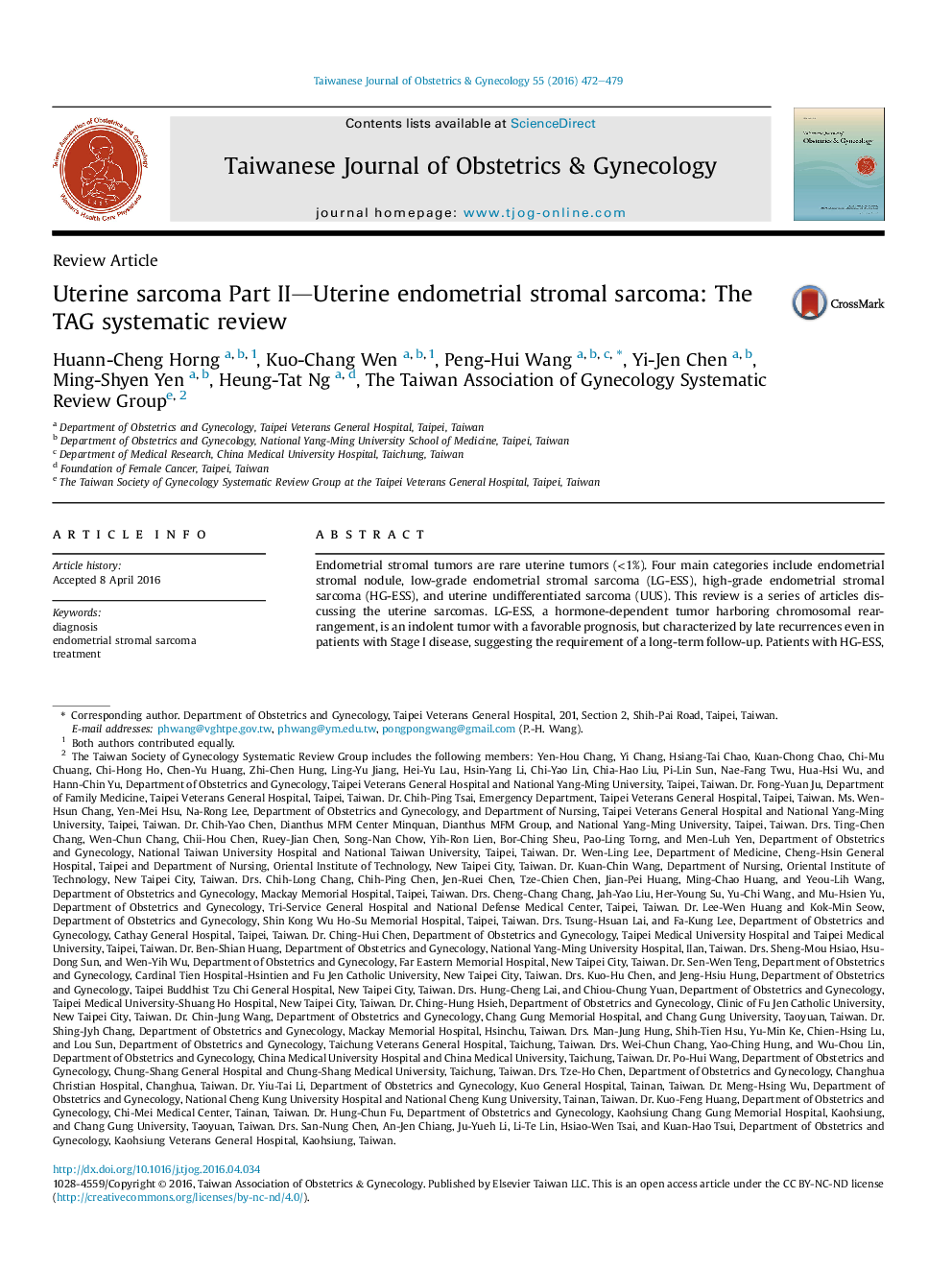| Article ID | Journal | Published Year | Pages | File Type |
|---|---|---|---|---|
| 3974873 | Taiwanese Journal of Obstetrics and Gynecology | 2016 | 8 Pages |
Endometrial stromal tumors are rare uterine tumors (<1%). Four main categories include endometrial stromal nodule, low-grade endometrial stromal sarcoma (LG-ESS), high-grade endometrial stromal sarcoma (HG-ESS), and uterine undifferentiated sarcoma (UUS). This review is a series of articles discussing the uterine sarcomas. LG-ESS, a hormone-dependent tumor harboring chromosomal rearrangement, is an indolent tumor with a favorable prognosis, but characterized by late recurrences even in patients with Stage I disease, suggesting the requirement of a long-term follow-up. Patients with HG-ESS, based on the identification of YWHAE-NUTM2A/B (YWHAE-FAM22A/B) gene fusion, typically present with advanced stage diseases and frequently have recurrences, usually within a few years after initial surgery. UUS is, a high-grade sarcoma, extremely rare, lacking a specific line of differentiation, which is a diagnosis of exclusion (the wastebasket category, which fails to fulfill the morphological and immunohistochemical criteria of translocation-positive ESS). Surgery is the main strategy in the management of uterine sarcoma. Due to rarity, complex biological characteristics, and unknown etiology and risk factors of uterine sarcomas, the role of adjuvant therapy is not clear. Only LG-ESS might respond to progestins or aromatase inhibitors.
